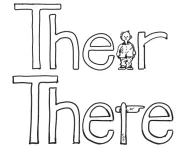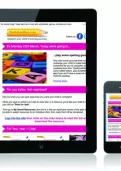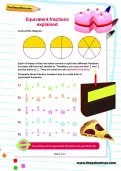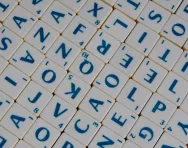Important update from TheSchoolRun
For the past 13 years, TheSchoolRun has been run by a small team of mums working from home, dedicated to providing quality educational resources to primary school parents. Unfortunately, rising supplier costs and falling revenue have made it impossible for us to continue operating, and we’ve had to make the difficult decision to close. The good news: We’ve arranged for another educational provider to take over many of our resources. These will be hosted on a new portal, where the content will be updated and expanded to support your child’s learning.
What this means for subscribers:
- Your subscription is still active, and for now, you can keep using the website as normal — just log in with your usual details to access all our articles and resources*.
- In a few months, all resources will move to the new portal. You’ll continue to have access there until your subscription ends. We’ll send you full details nearer the time.
- As a thank you for your support, we’ll also be sending you 16 primary school eBooks (worth £108.84) to download and keep.
A few changes to be aware of:
- The Learning Journey weekly email has ended, but your child’s plan will still be updated on your dashboard each Monday. Just log in to see the recommended worksheets.
- The 11+ weekly emails have now ended. We sent you all the remaining emails in the series at the end of March — please check your inbox (and spam folder) if you haven’t seen them. You can also follow the full programme here: 11+ Learning Journey.
If you have any questions, please contact us at [email protected]. Thank you for being part of our journey it’s been a privilege to support your family’s learning.
*If you need to reset your password, it will still work as usual. Please check your spam folder if the reset email doesn’t appear in your inbox.
Memory aids for kids

How can you help your child if he’s persistently struggling with a tricky spelling, or having difficulty remembering a particular times table? The answer could lie in memory aids, or mnemonics. ‘A mnemonic is any learning tool that helps you remember something, whether it’s simple or difficult,’ says Chris Stevens, author of Thirty days has September: Cool ways to remember stuff (£5.99, Buster Books). ‘They can be used by anyone, from small children up to people sitting law exams.’
How memory aids work
No one is sure exactly why memory aids and mnemonics work, but it’s likely to be to do with the fact that they involve different parts of the brain, rather than just the area that’s responsible for language or numbers. ‘It seems to help if the memory aid uses several different parts of the brain, so, for example, if it creates a visual image and taps into your child’s sense of humour,’ says Chris. Mnemonics also help by imposing meaning and structure, and by providing retrieval clues.


Boost Your Child's Learning Today!
- Start your child on a tailored learning programme
- Get weekly English & maths resources sent direct to your inbox
- Keep your child's learning on track
Although some memory aids are widely used and have stood the test of time – such as, ‘Never Eat Shredded Wheat’ as a mnemonic for the points of the compass – research shows that they’re most effective if they have some sort of personal meaning. ‘We’re all wired differently, so what works for one child won’t mean anything to another,’ explains Andy Salmon, AKA Sir Linkalot. ‘The bigger the impact, the more chance there is of a child remembering it – and if a child can think of a link that works for them, no matter how random it may seem, then it works. All you need is an imagination.’
Common types of memory aid
Rhymes:
Rhyme is a very good memory aid, as it uses the part of the brain that responds to rhythm and music: the part that remembers song lyrics with ease,’ says Chris. One of the most famous examples is, ‘I before E except after C’ to help you remember the spelling pattern.
Acrostics:
‘An acrostic is where you make a sentence out of the first letter of each word in a sequence to make it more memorable,’ Andy explains. These are often used for remembering a sequence, such as the order of the planets, but can also be helpful for tricky spellings: for example, ‘Freshen up the universe: recycle everything’ = future. ‘It’s important to make the acrostic relevant to the subject,’ adds Andy.
Letter linking:
This refers to using a familiar phrase to help remember a spelling, by creating a link between the expression and the tricky part of the word: for example, ‘a cup of tea and a biscuit’ helps children remember the difficult ‘cu’ part of biscuit by linking it with the ‘cu’ in the familiar saying. ‘What is crucial is to only link the awkward part of the word, as long links are harder to remember,’ Andy says.

Humour:
‘Things that make you laugh tend to get automatically locked in the long-term memory bank,’ says Andy, so some of the best memory aids are those that make you giggle, such as the well-known acrostic for diarrhoea: ‘dash in a rush: run, hurry, or else accident!’
Memory pictures:
Many people are visual learners, and find it easier to commit something to memory if there is a picture associated with it, as in the example below, used to remember the spelling of ‘because’:
Why does a case have a handle? Because you need to be able to carry it.
10 of the best spelling mnemonics
Because: Big elephants can’t always understand small elephants
There/their: In ‘their,’ the 'i' is a person; in ‘there,’ the 'r' is a signpost.

Special: The CIA are special agents.
Desert/dessert: A desert is full of sand (one s). A dessert is full of sweet stuff (two s’s).
People: People eat omelettes, people like eggs.
Surprise: Burp! That surprised me!
Separate: Never separate a para from his parachute.
Necessary: When it’s necessary to wear a smart shirt, remember that it has two sleeves (two s’s) and one collar (one c).
Difficulty: ‘Mrs D, Mrs I, Mrs FFI, Mrs C, Mrs U, Mrs LTY.’
Accommodation: Seeing as we now have twins, our accommodation needs two cots (two c’s) and two mattresses (two m’s).

Images: Bill Stott
For hundreds more spelling menmonics see Sir Linkalot's book Thinkalink, published by TheSchoolRun.








